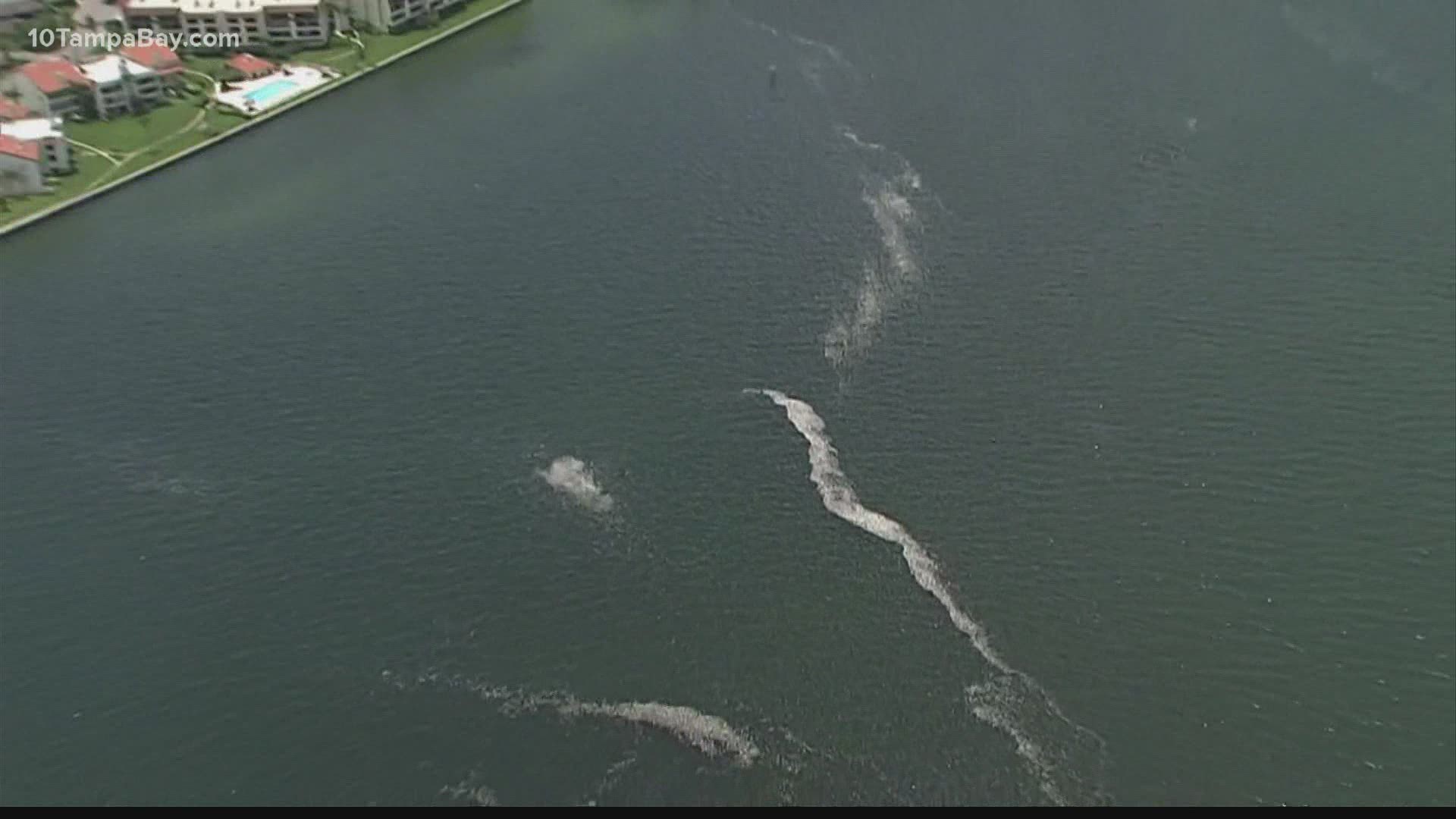TAMPA, Fla. — Red tide continues to wash up hundreds of thousands of pounds of dead sea life every day.
In the Tampa Bay region, it's generally caused by Karenia brevis, a single-celled organism called a dinoflagellate. Most dinoflagellates are harmless, but K. brevis is a lot different, producing neurotoxins that can cause respiratory problems in humans and attack the central nervous system of fish and other wildlife.
But, what is causing red tides to start and stay around? Scientists say there isn't a clear answer, with many factors, both natural and man-made, contributing to harmful algal blooms, also known as HABs.
To start, K. brevis is considered to be an extremely opportunistic form of algae. It can survive in water temperatures ranging from around 50° F to 90° F, but it thrives in temperatures between 72° F and 82° F. While they are pretty hardy, K. brevis does grow at a much slower rate than other species of phytoplankton.
They are not picky eaters, using a broad range of nutrients to survive and multiply, but they especially need nitrogen and phosphorus to thrive.

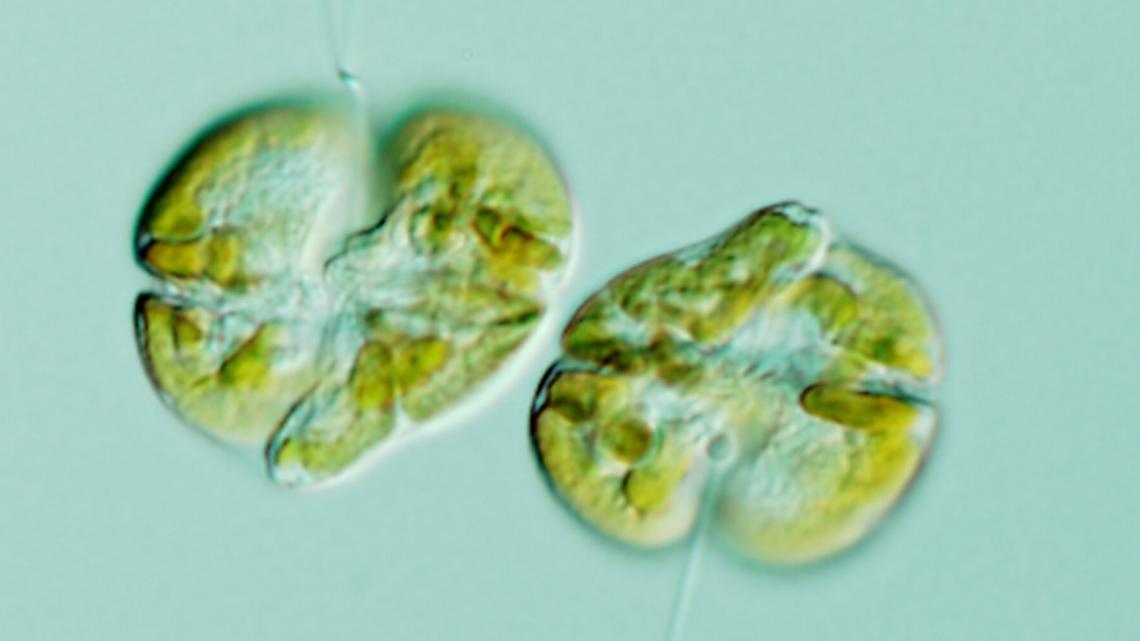
In an assessment of Florida red tides by the Mote Marine Laboratory, scientists conclude there are a wide variety of factors contributing to strengthening red tides and why they can last for months. There isn't a single source, including pollution, that can account for all the nutrients needed to sustain HABs.
Upwellings offshore initiating blooms
Most scientists do agree red tide blooms often start offshore and then move inshore from wind and ocean currents. Deep, nutrient-enriched water along the continental shelf can contribute to starting those blooms.
Most large water bodies like oceans and gulfs will have nutrient reservoirs where colder, saltier water, mixes with warmer, fresher water.

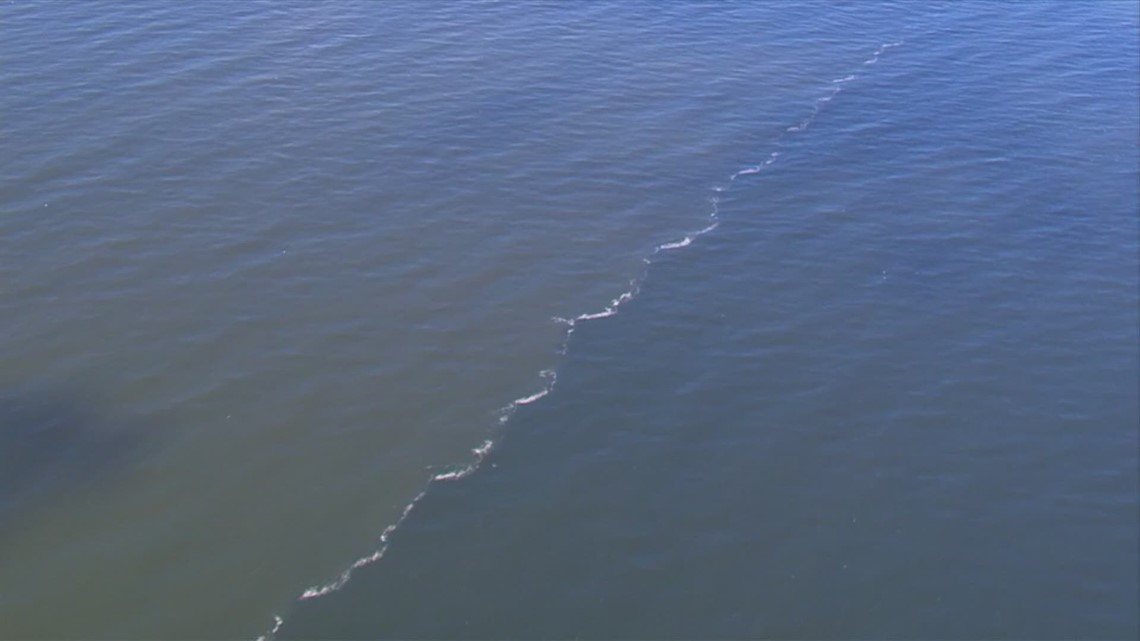
After reviewing data from blooms that occurred in the 1950s and 1960s, scientists conclude red tide blooms often start about 10 to 50 miles offshore. Once inshore, they can rapidly grow around inlets.
Other algae can help K. brevis get its start
Trichodesmium, known as blue-green algae, can be found in oceans. Scientists found blue-green algae blooms often come before or at the same time as K. brevis blooms. They can actually provide important nutrients, like nitrogen, for K. brevis to use.


Research also finds dust clouds, including sands from Africa, can contribute to these blooms. Those clouds can actually create iron deposits in the Gulf of Mexico, leading to blue-green algae and K. brevis blooms. Tampa Bay recently saw one of these dust storms from the Sahara Desert in June.

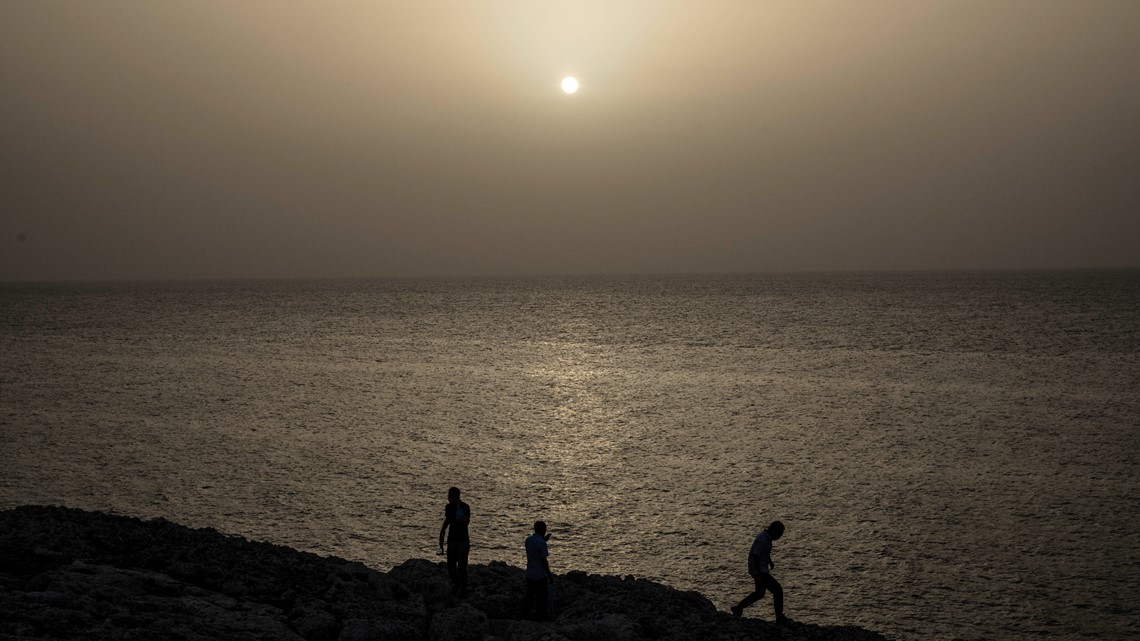
Dead sea life could mean more nutrients
As K. brevis spreads, it can create a massive fish kill. Scientists say dead sea life will drift to the bottom of the ocean before floating to the top, all while expelling those nutrients throughout the water column. All of those nutrients help sustain K. brevis as it travels inshore.

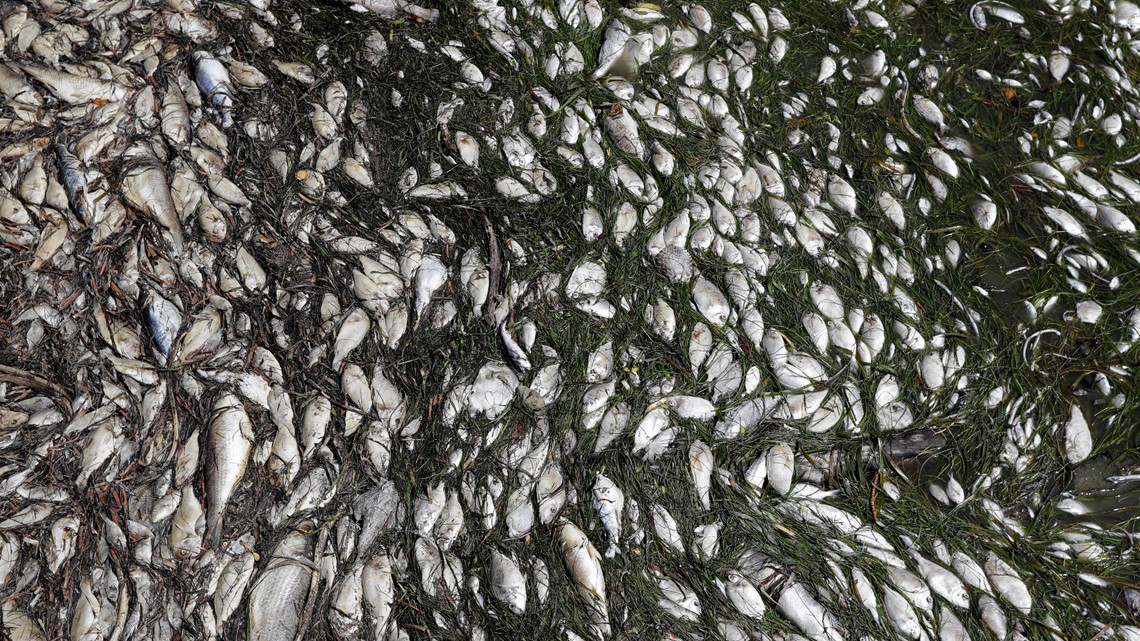
Coastal runoff and pollution
While there isn't any specific evidence showing pollution can start a red tide, it can extend how long one may last. There is no conclusive evidence linking a specific source of coastal pollution to red tides, but any form of pollution can have consequences.

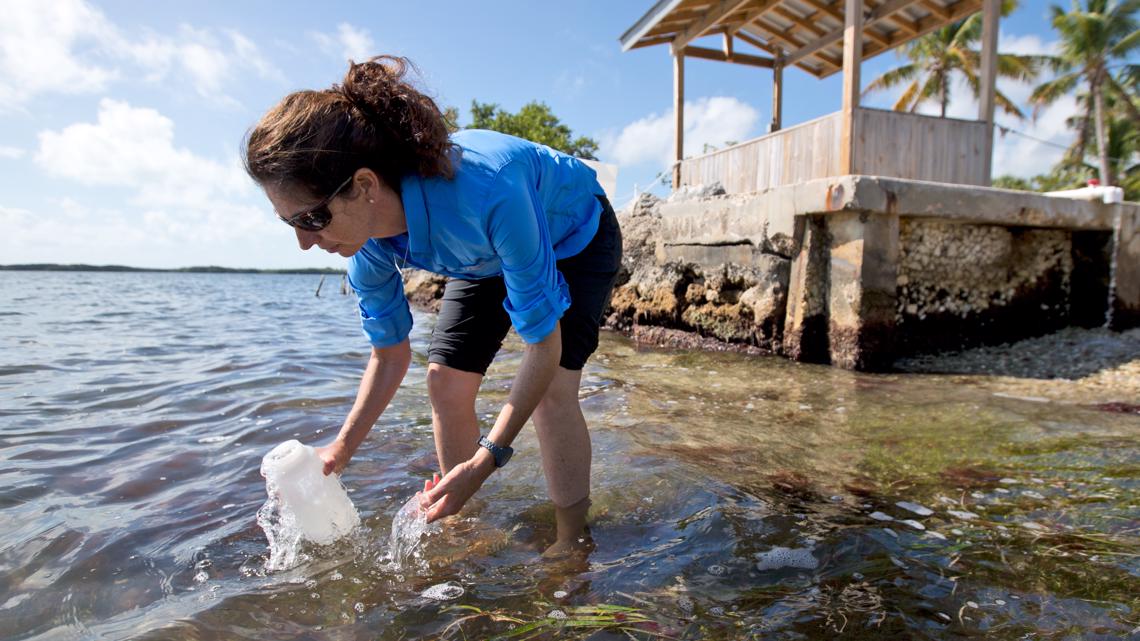
One study shows coastal lagoons, embayments, and other similar enclosed or semi-enclosed coastal areas with restricted water movement can see pollutants can build up in high concentrations. The same study found industrial and municipal waste discharges with significant amounts of organic material can create favorable conditions for severe red tides.
In a case study of Charlotte Harbor, researchers found present nitrogen levels flowing into the estuary are three times what it was prior to the 1800s. Due to improved water quality treatment facilities and land use practices, nitrogen levels from rivers started declining in the 1980s and 1990s. However, research projected higher amounts after 1998 as populations continue to increase.
Statewide, Mote Marine Laboratory found substantial improvements to controlling point source pollution over the past three decades. However, non-point source pollution appears to have increased over time.
Scientists from Mote Marine Laboratory conclude land use activities could affect nutrient levels, making some coastal areas more vulnerable. Once a red tide arrives, those increased nutrient levels can sustain K. brevis. Research adds it's doubtful coastal pollution can trigger a red tide to form, but it can sustain K. brevis, and even provide a thriving environment.
What other people are reading right now:
- Hillsborough GOP calls on Gov. DeSantis to stop US Capitol Police Tampa field office
- 3 people arrested as Cuba demonstrators attempted to get on I-275
- 676 tons of dead sea life collected in Pinellas County as red tide continues to sweep through Tampa Bay
- So that's what happened: Lightning's Pat Maroon admits to dropping the Stanley Cup
- How does red tide affect my health?
- A Frank Conversation: New podcast explores race, religion, politics and more
►Breaking news and weather alerts: Get the free 10 Tampa Bay app
►Stay In the Know! Sign up now for the Brightside Blend Newsletter

